

City Hall
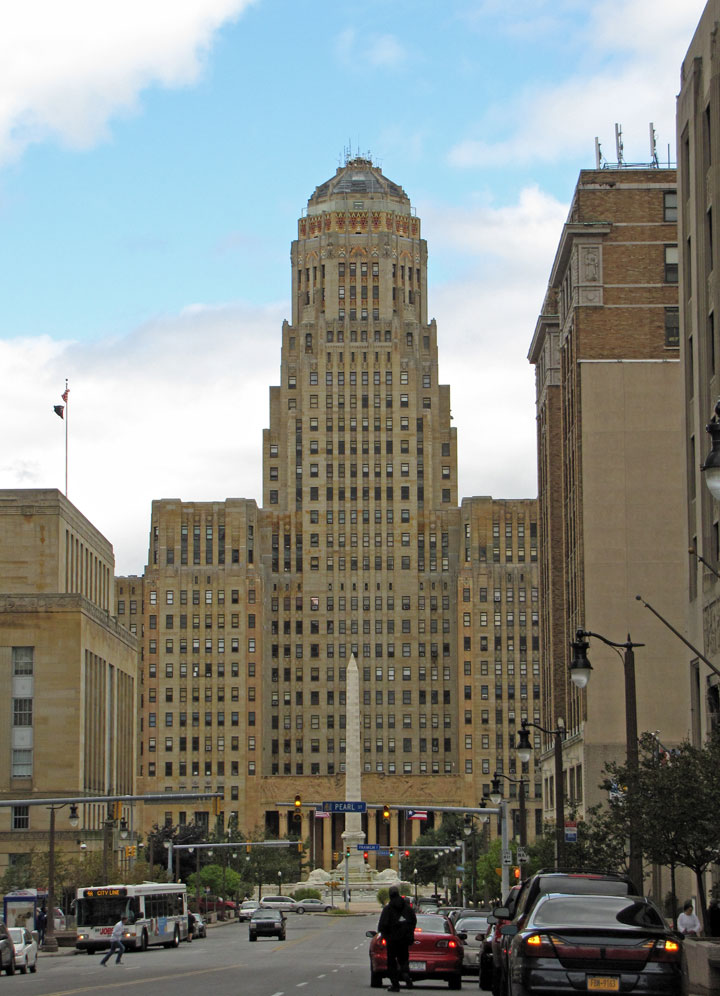
Buffalo City Hall
Buffalo City Hall is the seat for municipal government in the City of Buffalo, New York State. Located at 65 Niagara Square, the 32 story Art Deco building was completed in 1931 by Dietel, Wade & Jones.

McKinley Monument in foreground
At 378 ft (115.2 m) height or 398 feet (121.3 m) from the street to the tip of the tower, it is one of the largest and tallest municipal buildings in the United States of America and is also one of the tallest buildings in Western New York. The design was by George Dietel, architect, with the assistance of John J. Wade. The friezes were sculpted by Albert Stewart and the sculpture executed by Rene Paul Chambellan.
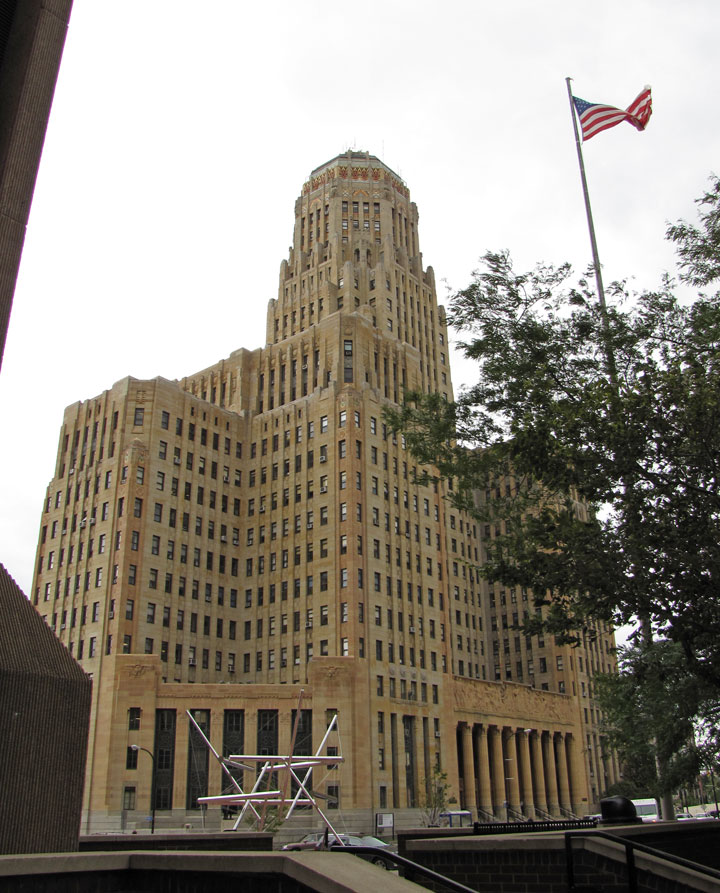
It was listed on the National Register of Historic Places in 1999.
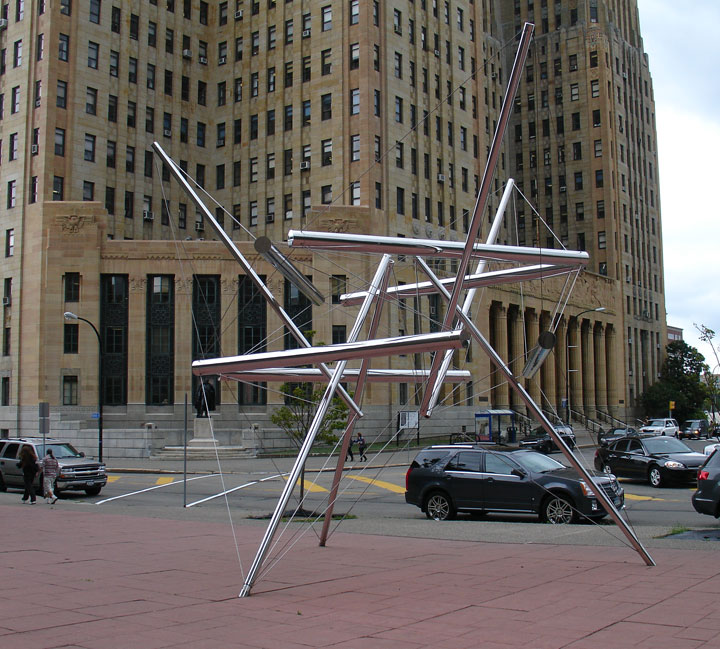
detail of the Art piece
City Hall was built by the John W. Cowper Company, the same firm who built the Statler Hotel and the Buffalo Athletic Club, also on Niagara Square. The cost of building City Hall was $6,851,546.85, including the architect's fees, making it one of the costliest city halls in the country.
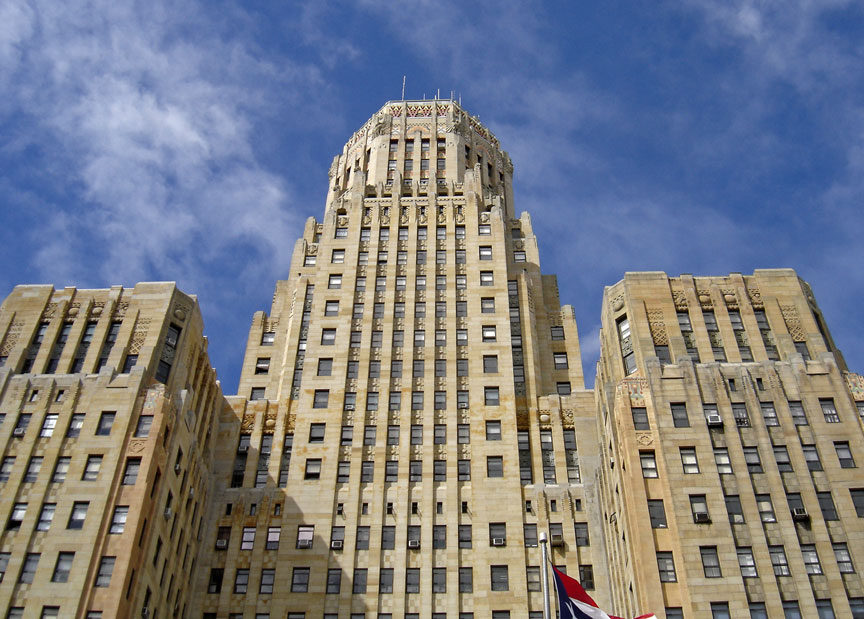
Ground was broken on September 16, 1929 and the corner stone was laid May 14,
1930. The building was completed on November 10, 1931, though parts of the
building were occupied as early as September 1931. The building was dedicated in
July 1932. City offices were previously located in County and City Hall.
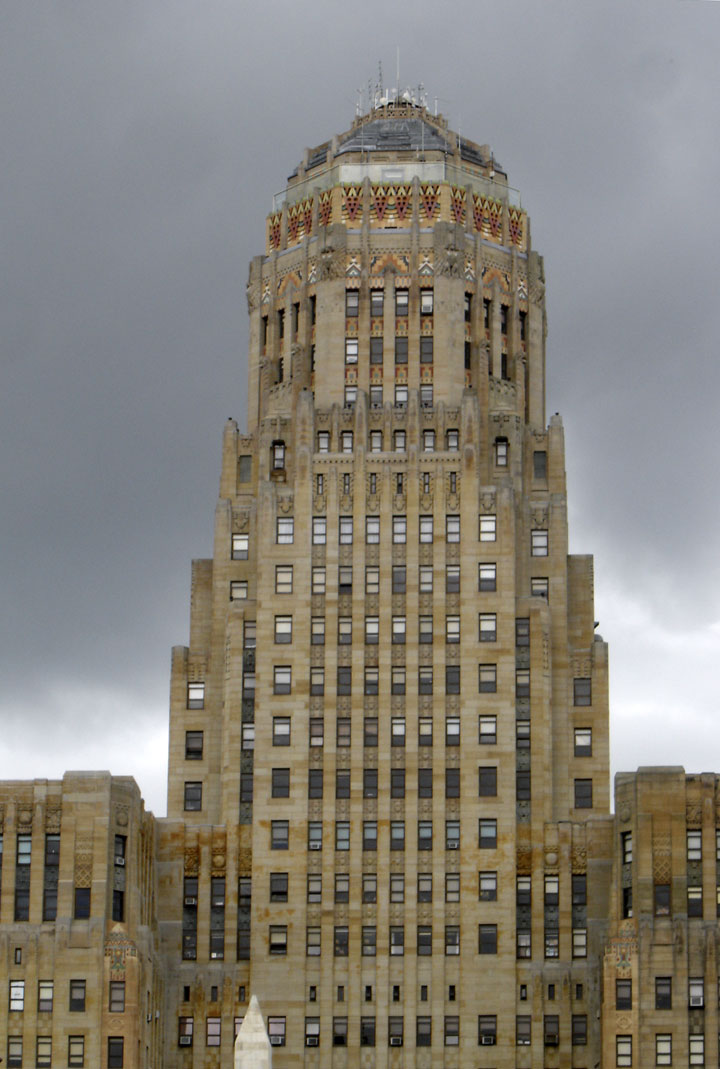
In the summer 2009 Buffalo City Hall was undergoing renovation on the south wing
and was covered with scaffolding and canvas.
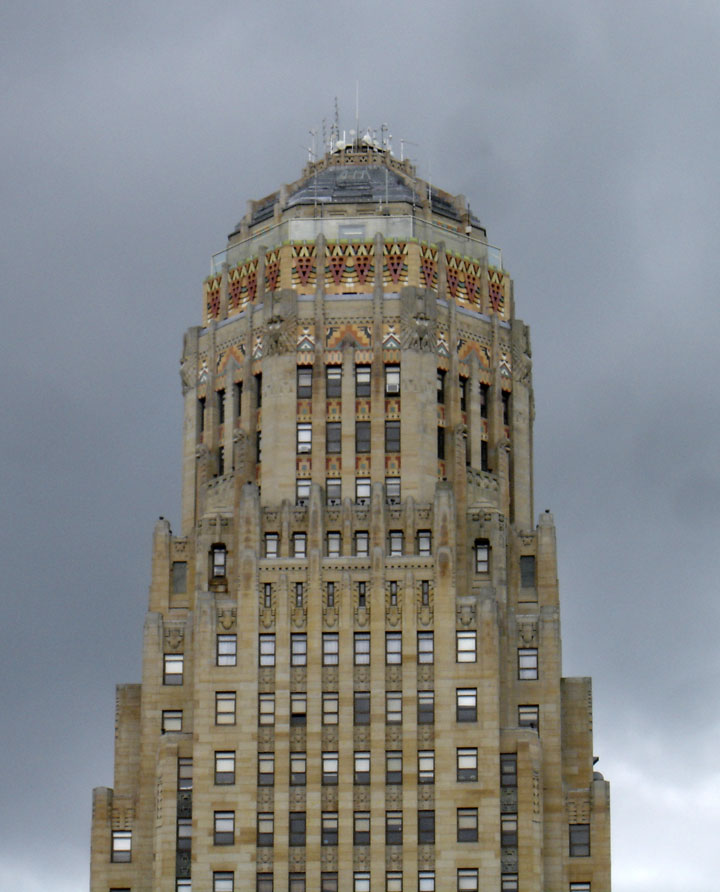
Buffalo's tallest until 1970, City Hall has 32 stories, 26 of which offer usable
office space. The total floor area is 566,313 square feet (52,612.2 m2) and the
footprint of the site on Niagara Square is 71,700 square feet (6,660 m2). There
are 1,520 windows from the first to the twenty-fifth floor. A practical design
feature is that all of them open inward, making window washers unnecessary. It
takes approximately ten days to clean them all. There are eight elevators to the
13th floor and four to the 25th floor. Curtis Elevator Company furnished the
first elevators, with additional elevators supplied later by Otis Elevator
Company.

There are 5,000 electrical outlets, 5,400 electrical switches, and 21 motor
driven ventilation fans. One hundred and ten miles of copper wire weighing 43
tons, and 47 miles or 180 tons of conduit pipe, serve the building, as well as
26 miles or 5 car loads of underfoot conduit. There are either 138 or 143 clocks
(counts vary) regulated by a master clock in the basement, and 37 fire alarm
stations distributed throughout the building.
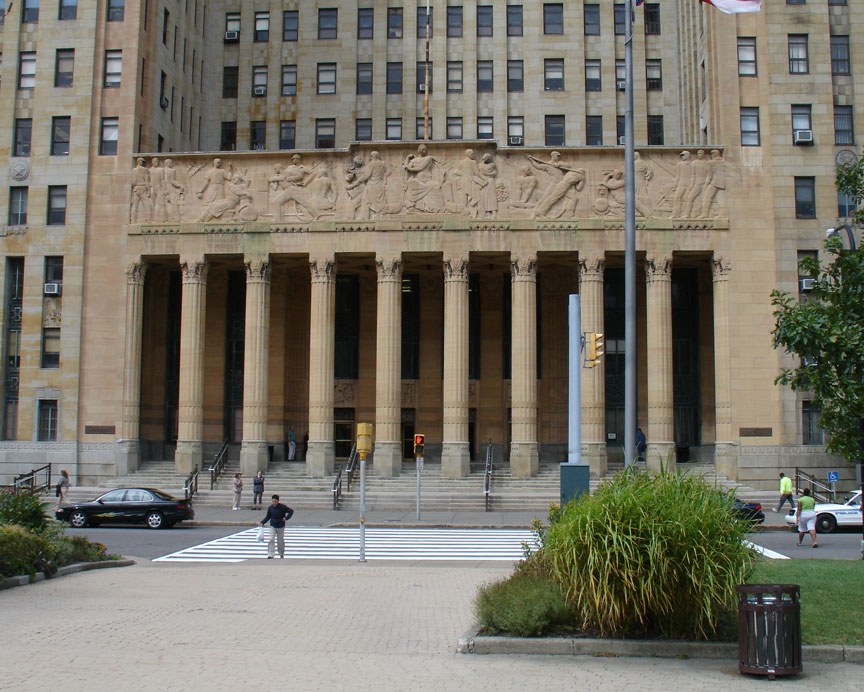
It was originally equipped with 375 telephones and a master switchboard.
External illumination was provided from dusk to midnight by 369 flood lights
with an average candlepower of 350.
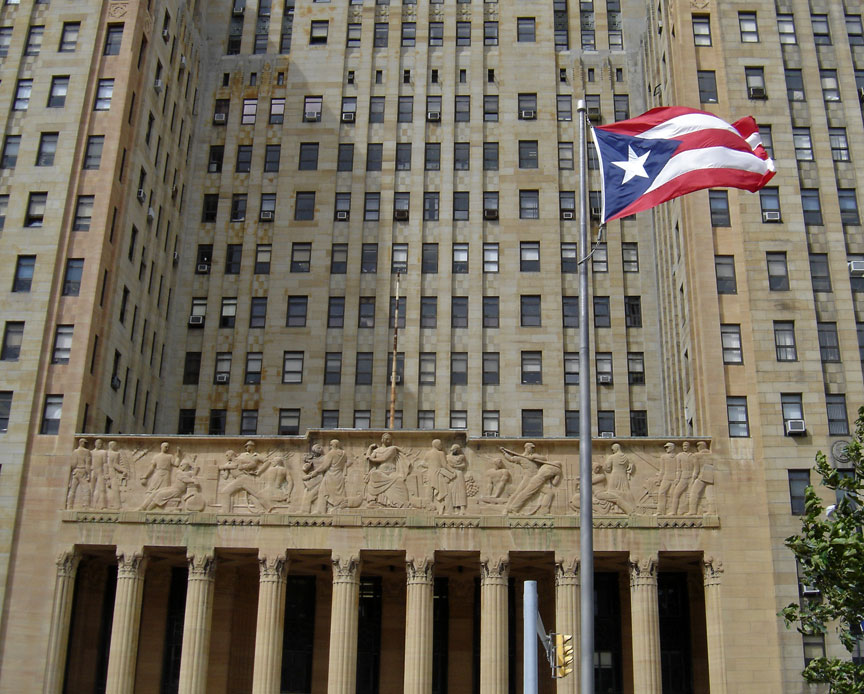
City Hall was designed and built with a non-powered air-conditioning system,
taking advantage of strong prevailing winds from Lake Erie. Large vents were
placed on the west side of the building to catch wind, which would then travel
down ducts to beneath the basement, to be cooled by the ground. This cooled air
was then vented throughout the building. Winds off the lake were usually strong
enough to power air through this system.

In 1939, construction defects were discovered. Apparently, many anchors were
left out in the walls behind the granite facings. and water seeped in, causing
extensive damage.

It was customary in the past to erect triumphal arches memorializing the
victories of war, but the architect and builders of Buffalo City Hall have
endeavored to portray the constructive rather than the destructive side of life.
Their focus was to accomplish in stone, steel and glass what the ancient Greeks
did in stone and timber.
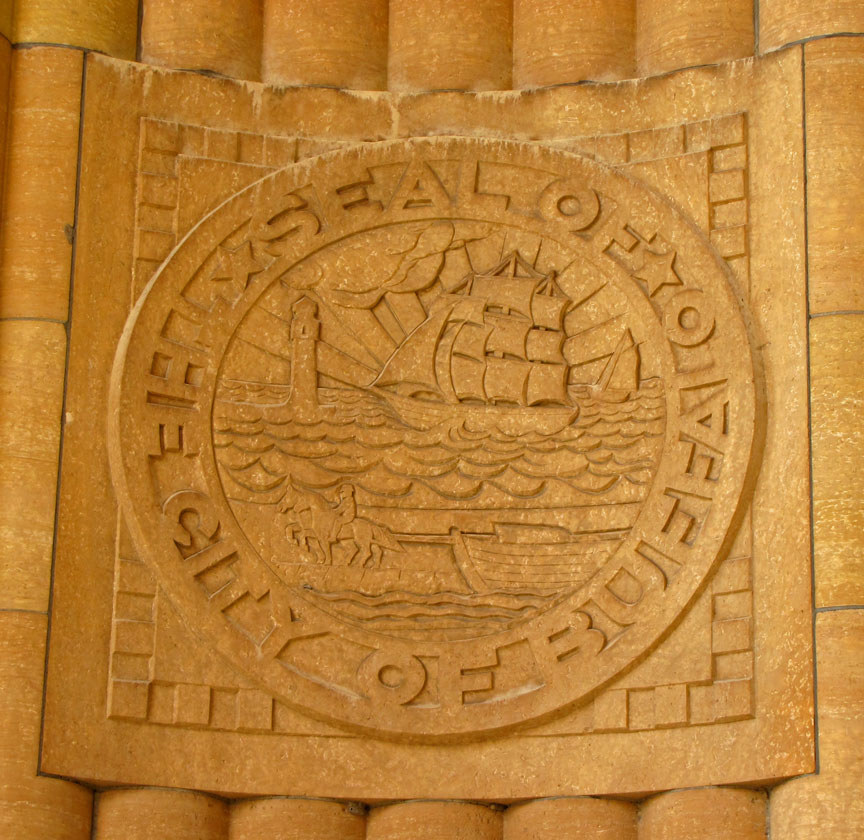
The importance of this Art Deco masterpiece is immediately relevant upon viewing
its command of the downtown Buffalo and the waterfront. When approaching City
Hall from Niagara Street, one is impressed with an architectural style which is
modern without being modernistic and which depicts the age in which it was
built. Also, it generally balanced its modernism with a taste of the symbolism
normally associated with classical architecture. The exterior and interior are
adorned with symbolic figures and decorations, which in bold relief portray an
industrial theme.
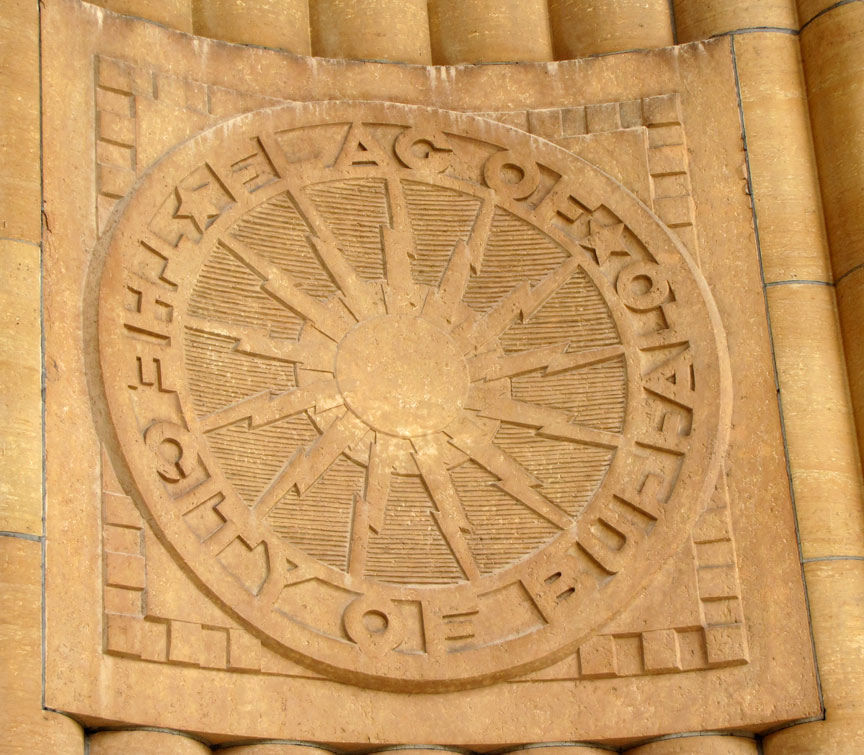
In keeping with this approach, the main entrance of City Hall is made up of
symbolic units forming columns and lintels. The shafts of the columns represent
large octagons nut with rivet heads and stud heads applied there. The molding of
the lintel is styled to depict a saw, thus portraying the power in Buffalo's
industry.
Text from Wikipedia
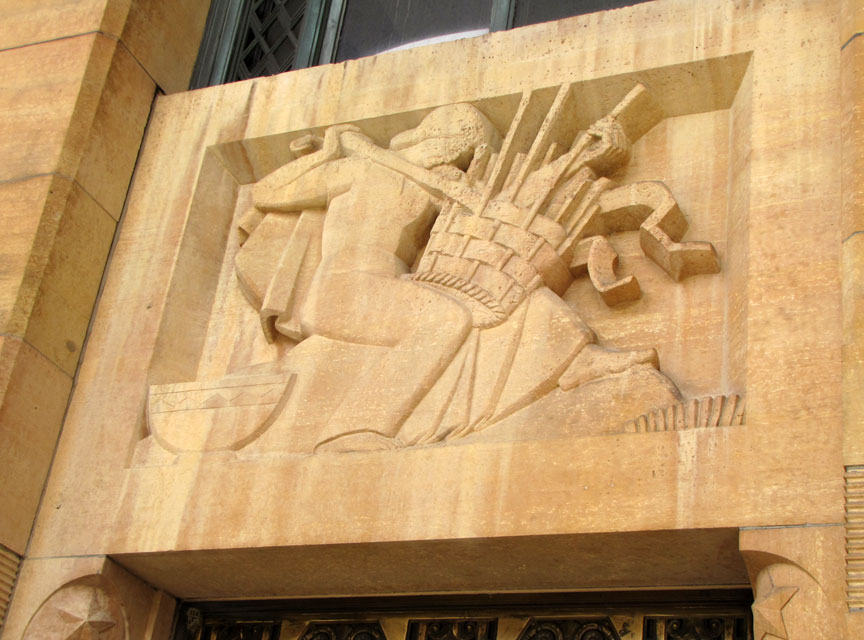

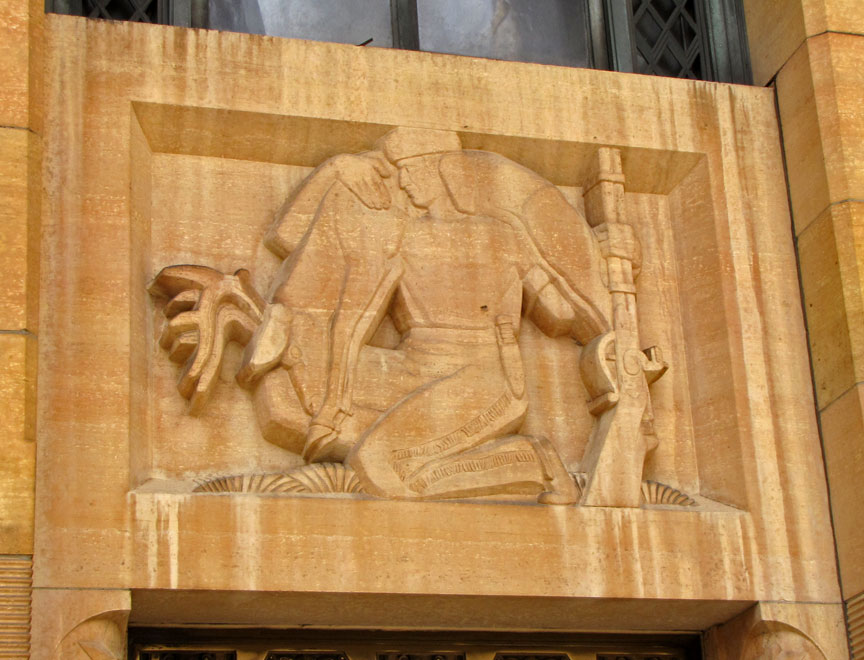
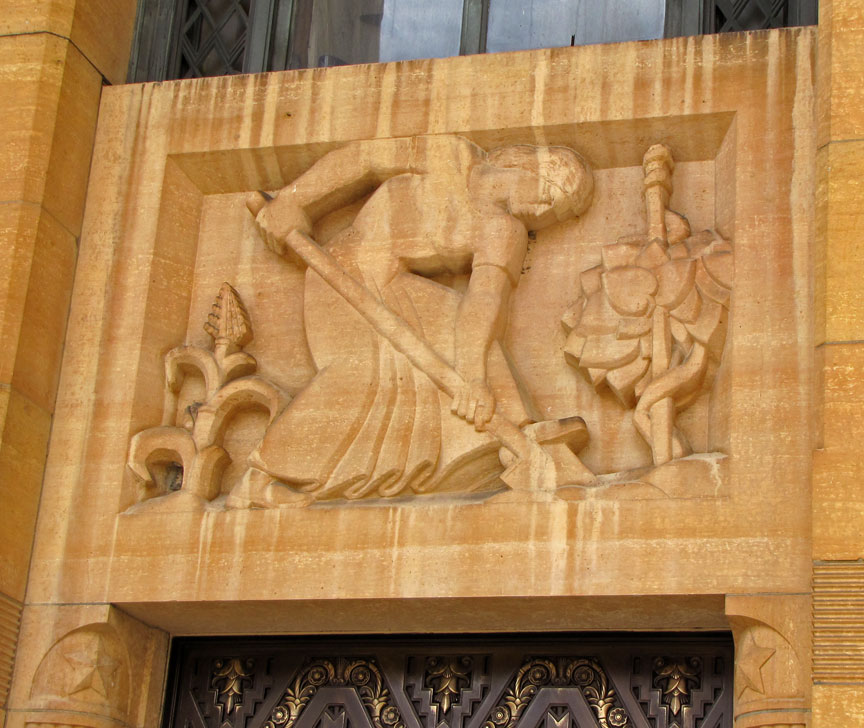
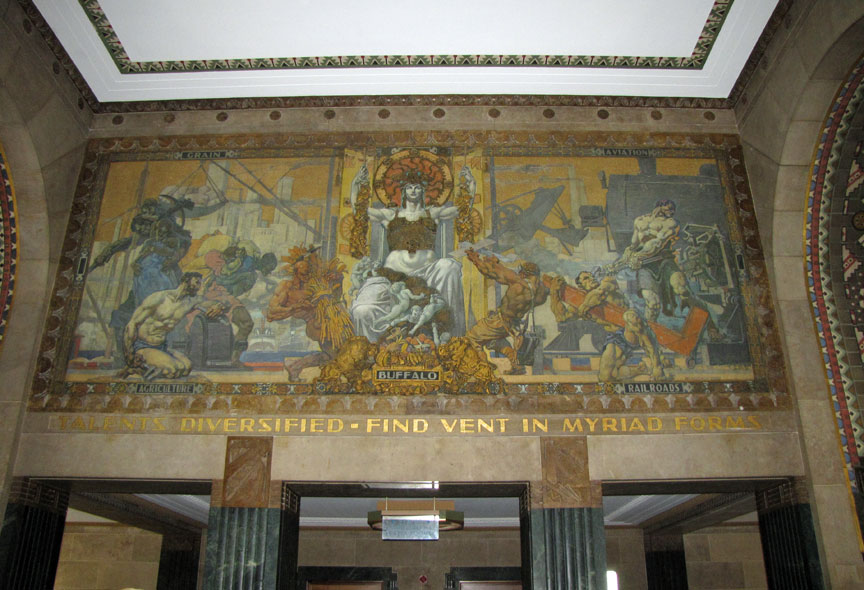
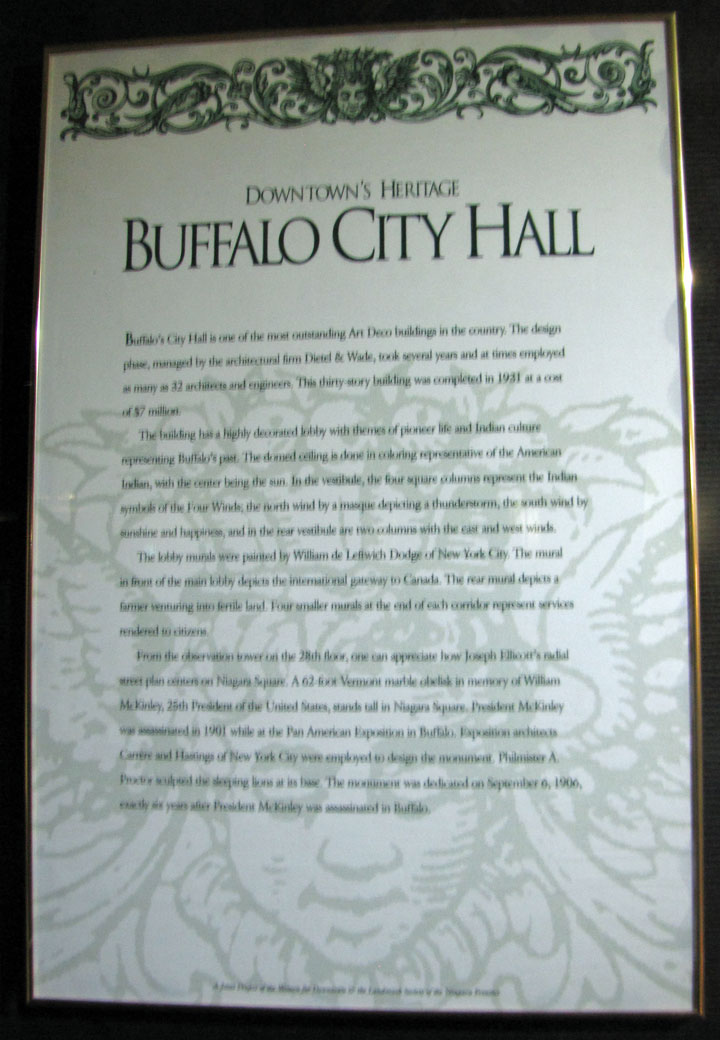

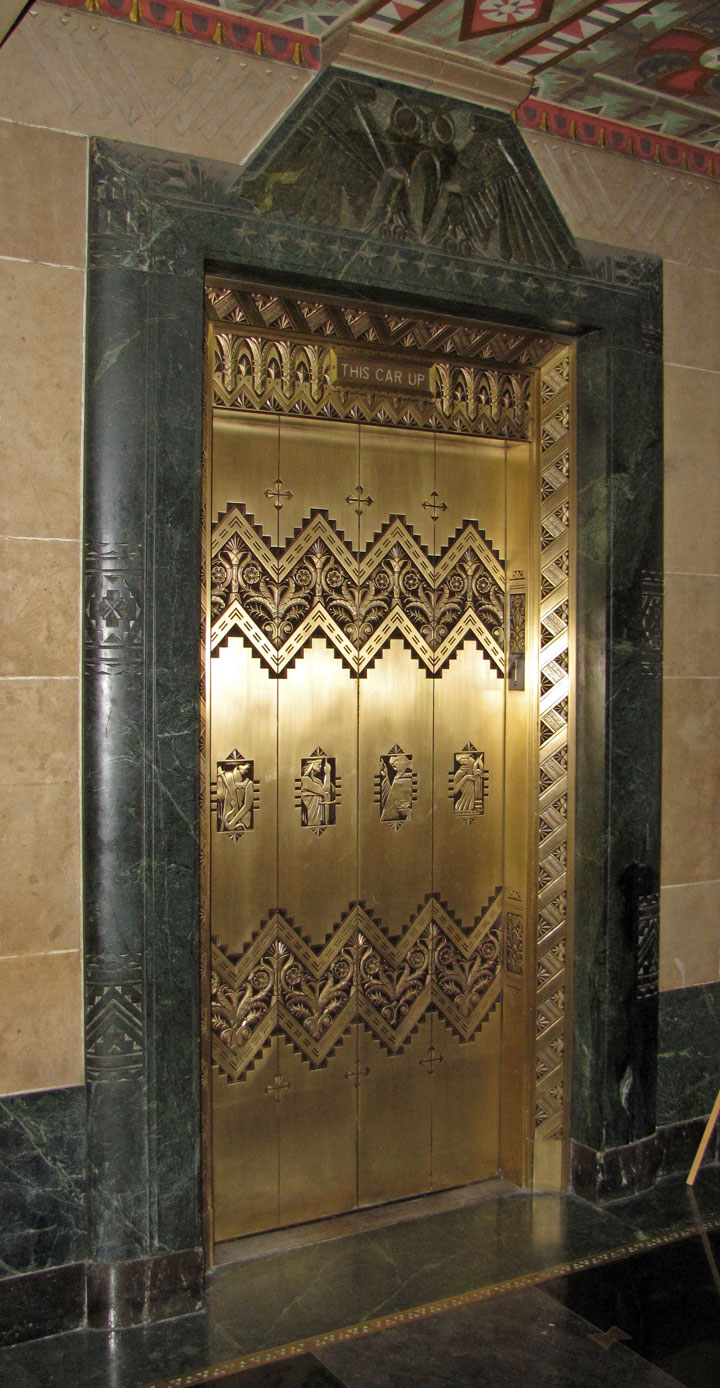
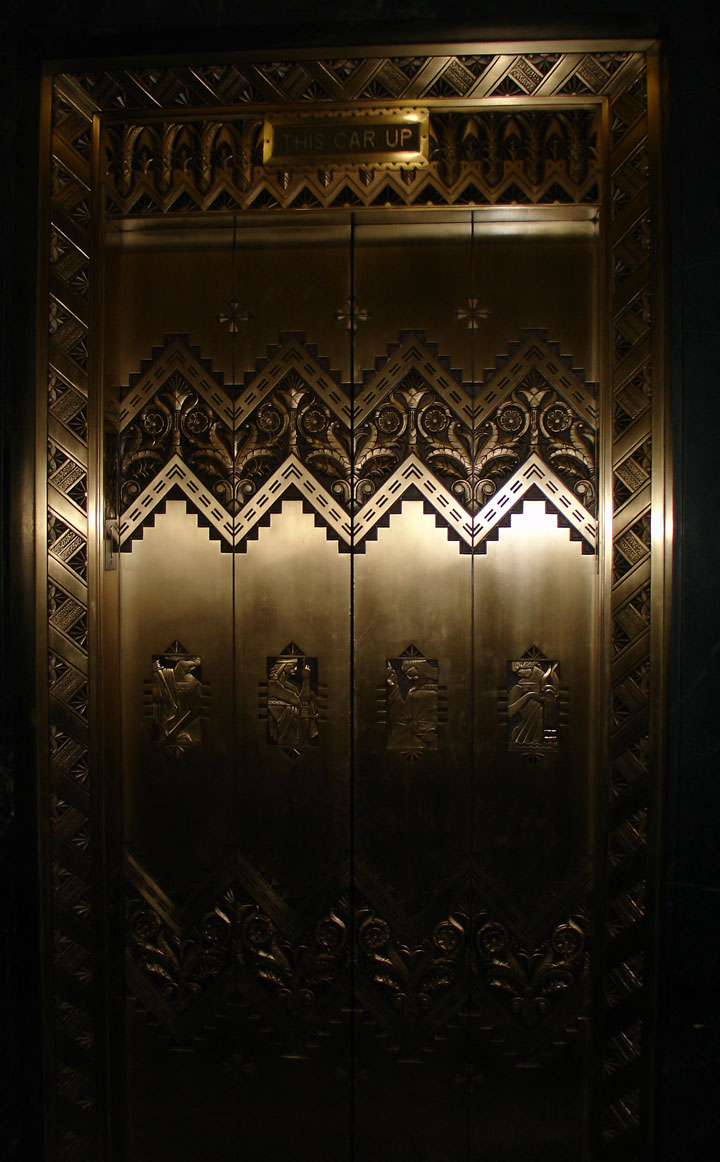
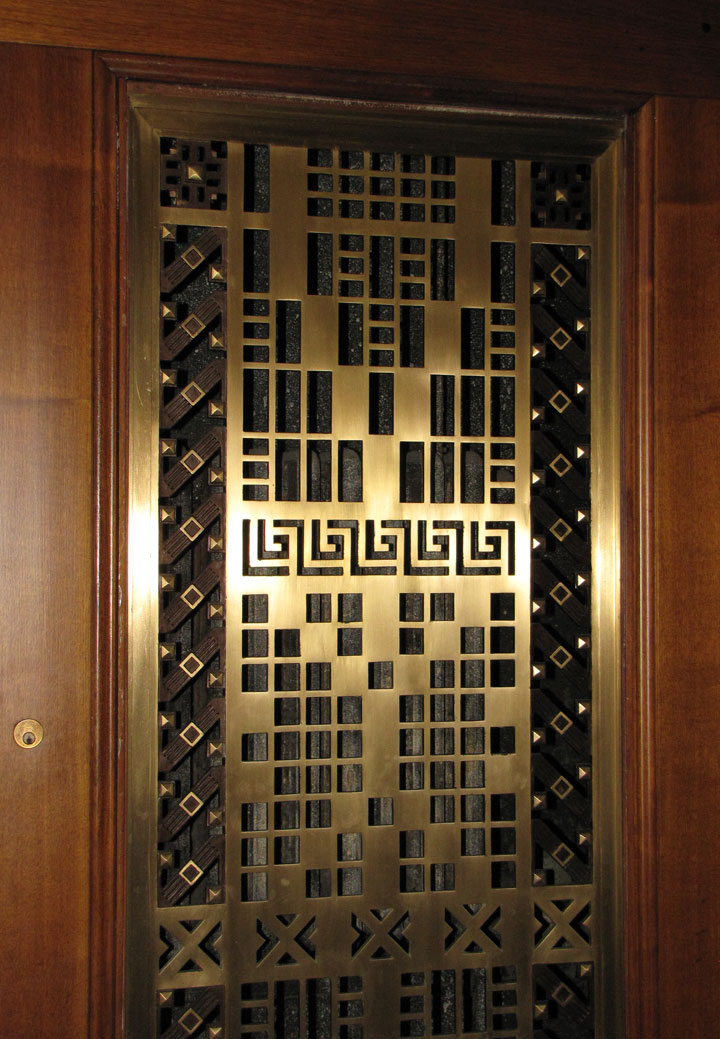
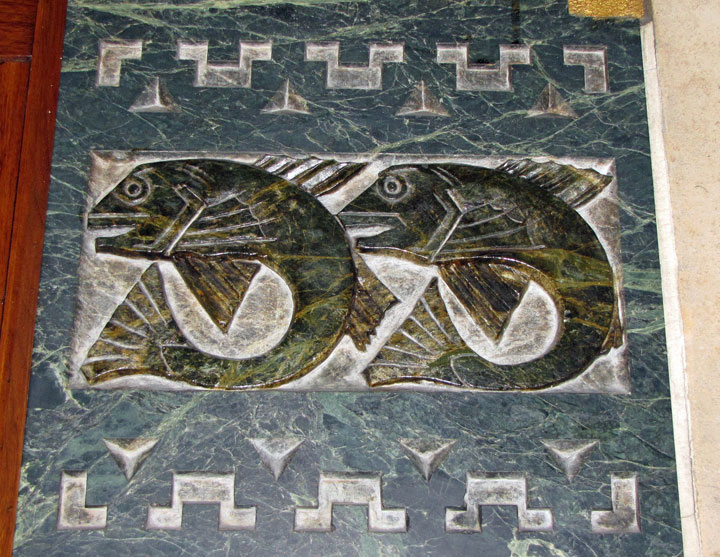

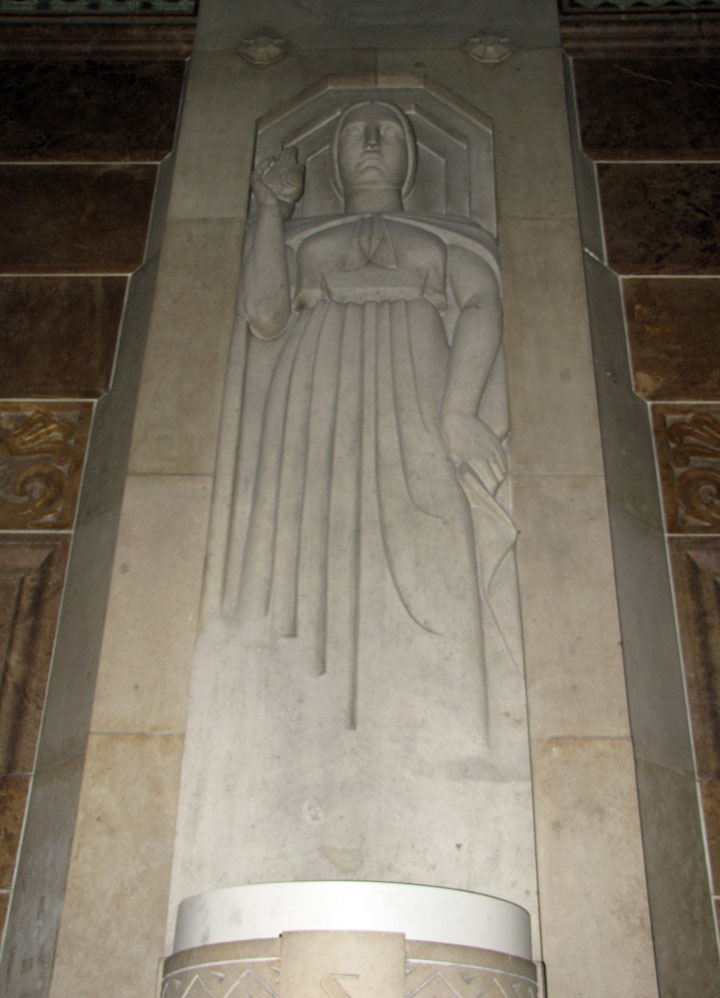

President Grover Cleveland
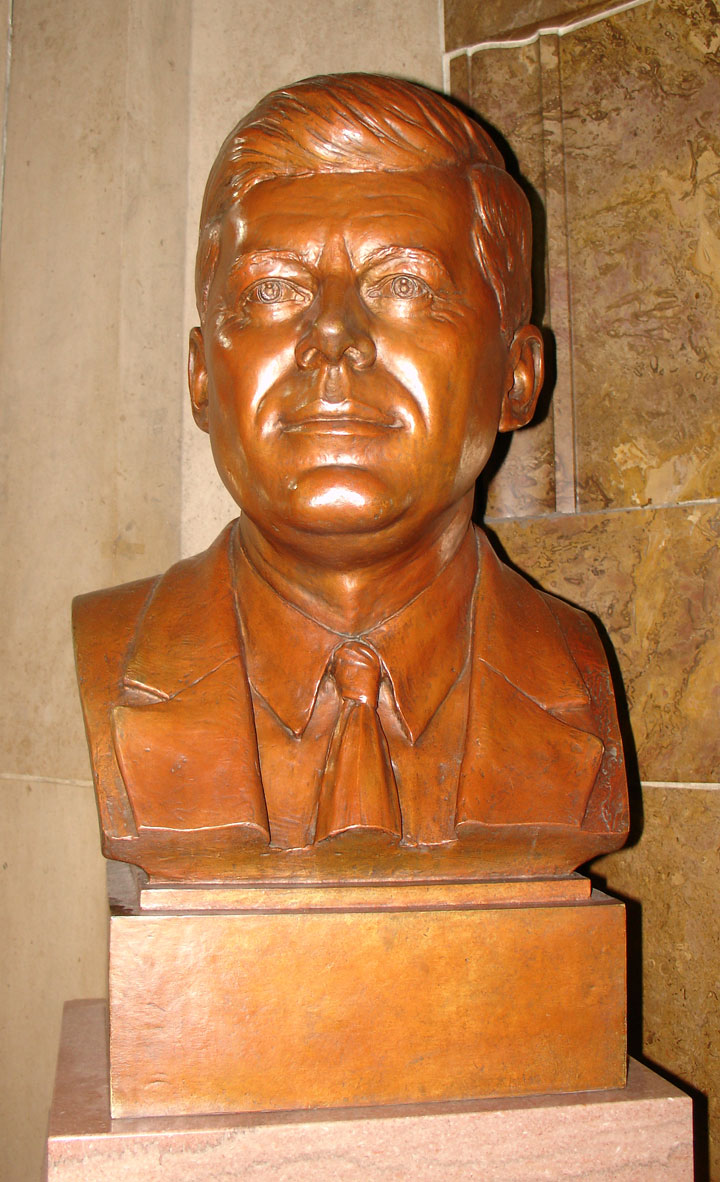
J. F. K.
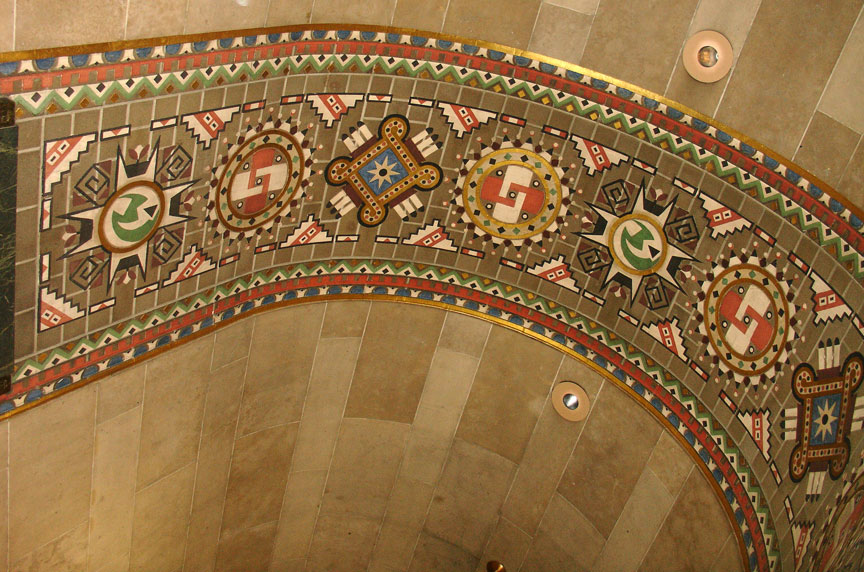
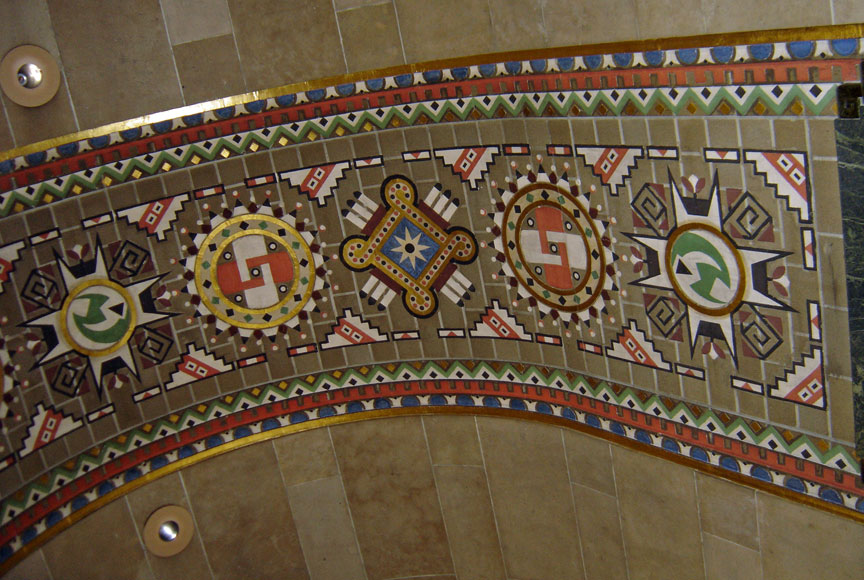
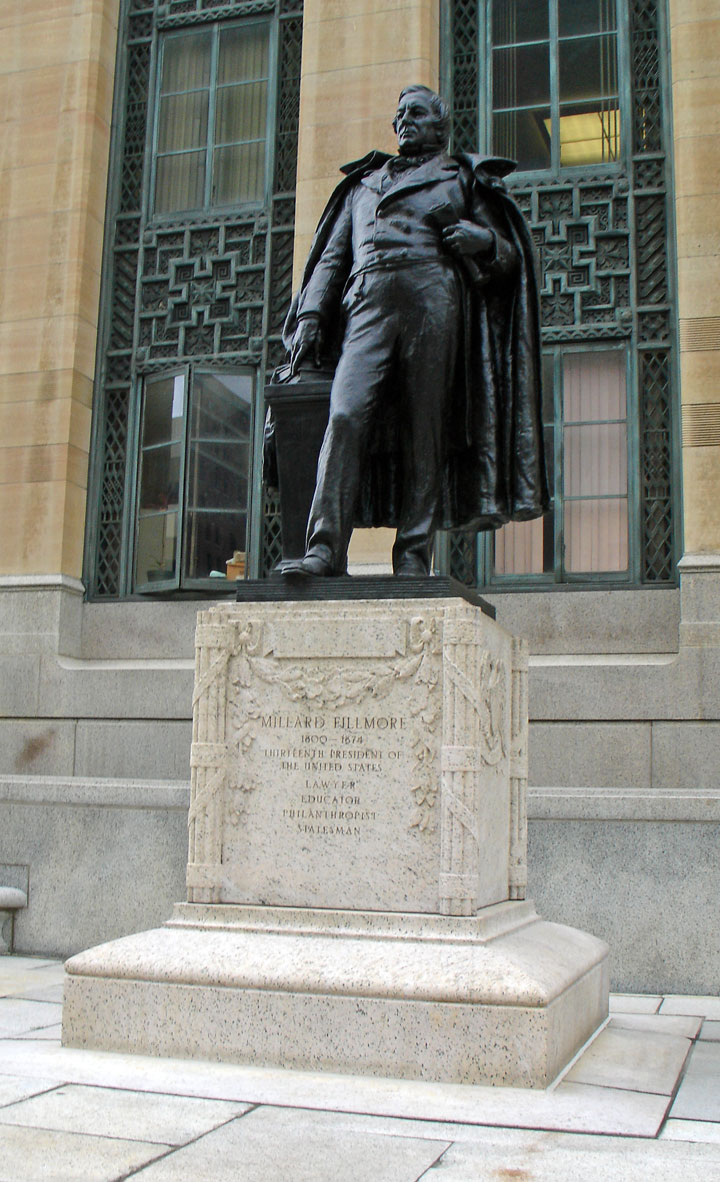
President Millard Fillmore